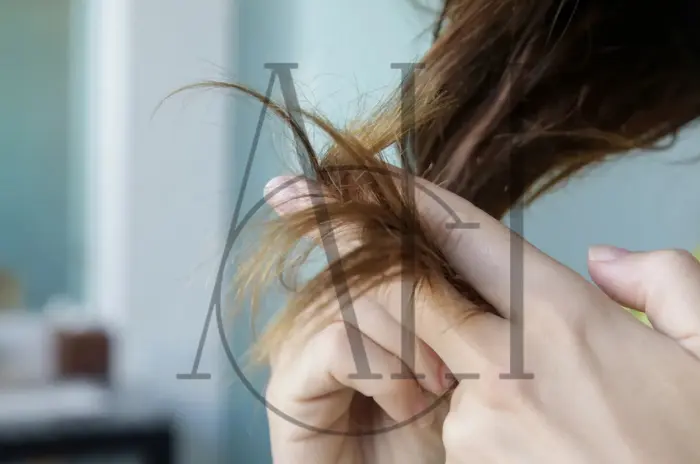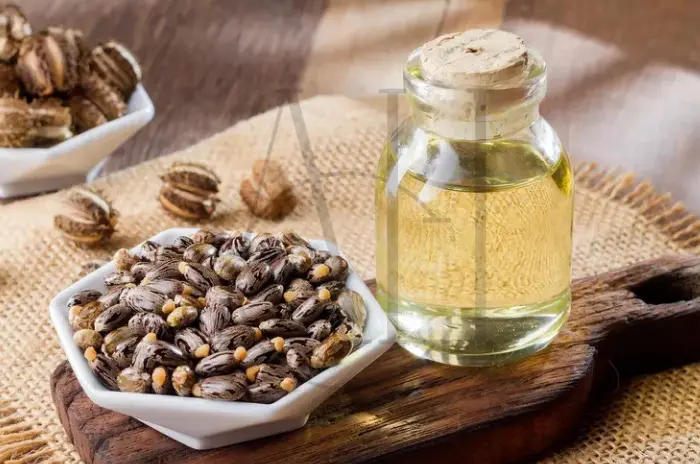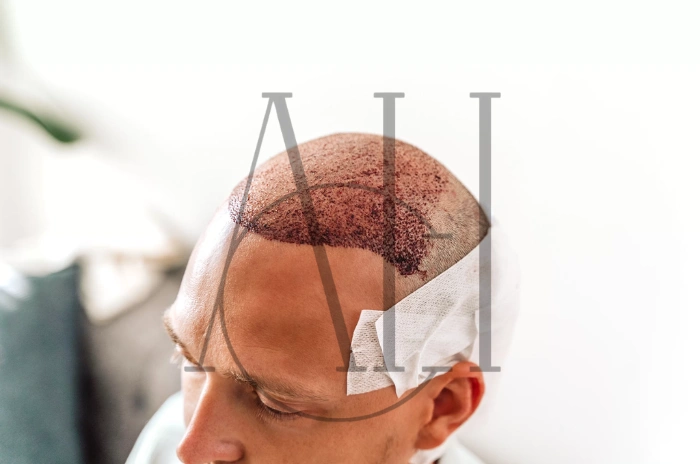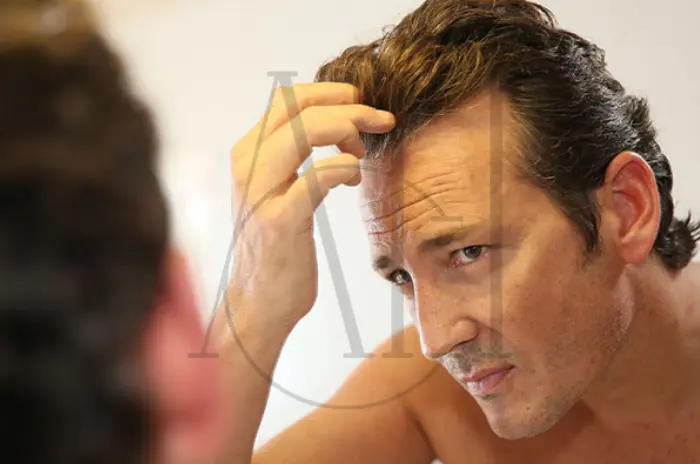Nothing is more frustrating than stepping out of the shower with freshly washed hair, only to find it looking greasy again within hours. This common problem affects millions of people worldwide and can significantly impact confidence and daily routines. At Albania Hair intermediary organization, we understand the complexity of hair and scalp health, and we’re here to help you understand why this happens and what you can do about it.
Greasy hair after washing is often a sign of underlying scalp imbalances, improper hair care techniques, or lifestyle factors that need addressing. The good news is that with the right knowledge and approach, you can regain control over your hair’s oil production and achieve the fresh, clean look you desire.
Table of Contents
ToggleWhat Does Greasy Hair Look Like
Recognizing greasy hair is the first step toward addressing the problem. Understanding the visual and tactile signs helps you identify when your hair needs attention and track improvements in your hair care routine.
Dull, Limp Strands with Little Root Volume
Greasy hair typically lacks the bounce and vitality of healthy, clean hair. When excess oil weighs down your strands, you’ll notice:
- Hair appears flat against the scalp with minimal lift at the roots
- Strands look lackluster and reflect light differently than clean hair
- Overall hair texture feels heavy and lifeless
- Styling becomes difficult as hair won’t hold volume or shape
This dullness occurs because oil creates a coating on each strand that prevents light from reflecting naturally, giving hair a matte, unhealthy appearance.
Scalp and Strands Feel Oily or Heavy
The tactile experience of greasy hair is unmistakable. Your scalp and hair will feel noticeably different when oil production is excessive:
- Running fingers through hair leaves an oily residue on your hands
- Scalp feels slick or greasy to the touch
- Hair feels heavier than usual and may stick together in clumps
- The sensation of cleanliness disappears quickly after washing
Hair Becomes Knotty and Harder to Style
Excess oil doesn’t just affect appearance—it significantly impacts manageability. Greasy hair presents several styling challenges:
- Tangles form more easily and are harder to remove
- Hair products don’t distribute evenly or may cause further buildup
- Styles fall flat quickly and lose their shape
- Brushing becomes more difficult and may cause breakage
Common Reasons Hair Feels Greasy After Washing
Understanding the root causes of post-wash greasiness is essential for developing an effective treatment plan. Multiple factors can contribute to this frustrating condition.
Overactive Sebaceous Glands (Seborrhea)
Your scalp contains thousands of sebaceous glands that produce sebum, the natural oil that protects and moisturizes your hair and scalp. When these glands become overactive, they produce more oil than necessary:
Causes of overactive sebaceous glands:
- Genetics play a significant role in oil production levels
- Hormonal fluctuations, especially during puberty, pregnancy, or menopause
- Stress can trigger increased sebum production
- Certain medications may affect oil gland activity
Signs of seborrhea:
- Persistent oiliness despite regular washing
- Scalp may appear shiny or greasy
- Hair feels oily within hours of washing
- May be accompanied by scalp irritation or flaking
Hair Type: Fine and Straight Hair Picks Up Oil Faster
Your natural hair type significantly influences how quickly oil becomes visible and problematic. Fine and straight hair types are particularly susceptible to appearing greasy:
| Hair Type | Oil Visibility | Recommended Wash Frequency |
|---|---|---|
| Fine, Straight | High – oil travels quickly down strands | Daily to every other day |
| Thick, Straight | Medium – oil stays closer to scalp | Every 2-3 days |
| Fine, Wavy | Medium-High – some texture slows oil travel | Every other day |
| Thick, Curly | Low – curls prevent oil from traveling | 2-3 times per week |
Fine hair has less surface area to absorb oil, meaning excess sebum becomes noticeable more quickly. Straight hair provides a smooth pathway for oil to travel from scalp to ends, unlike curly hair which naturally slows this process.
Buildup from Oily Products and Unclean Tools
Product buildup is a major contributor to greasy-looking hair. Even after washing, residues from styling products, conditioners, and environmental pollutants can remain on your hair and scalp:
Common sources of buildup:
- Heavy conditioners and leave-in treatments
- Styling products with silicones or oils
- Hard water minerals that don’t rinse away completely
- Environmental pollutants that stick to hair
Tools that transfer oil:
- Dirty hairbrushes and combs
- Unwashed pillowcases and hats
- Hair accessories that haven’t been cleaned
- Towels used repeatedly without washing
Washing Too Often or Too Little
Finding the right washing frequency is crucial for maintaining healthy oil levels. Both extremes can lead to greasy hair:
Overwashing consequences:
- Strips natural oils, causing scalp to overproduce sebum
- Can irritate the scalp and trigger increased oil production
- May damage hair cuticles, making them more prone to oil absorption
Underwashing consequences:
- Allows oil, dirt, and product buildup to accumulate
- Can lead to clogged follicles and scalp irritation
- Creates an environment for bacterial growth
Wrong Shampoo or Conditioner Choices
Using products that aren’t suited to your hair type or needs can exacerbate greasiness:
Problematic product characteristics:
- Heavy, moisturizing formulas designed for dry hair
- Products with excessive oils or silicones
- Conditioners applied to the scalp instead of just the ends
- Sulfate-free formulas that may not cleanse effectively for very oily hair
Lifestyle and Environmental Factors
Your daily habits and environment play a significant role in hair oil production and accumulation. Understanding these factors helps you make informed choices about your routine.
Air Pollution and Scalp Oiliness
Environmental pollutants don’t just make your hair dirty—they can actually trigger increased oil production:
- Particulate matter from air pollution sticks to hair and scalp
- Pollutants can irritate the scalp, leading to increased sebum production
- Urban environments typically have higher pollution levels affecting hair health
- Climate and humidity levels influence how quickly oil becomes visible
Protection strategies:
- Use protective hairstyles when in highly polluted areas
- Consider clarifying treatments more frequently if you live in a polluted environment
- Rinse hair with clean water after exposure to heavy pollution
Diet Impact: Dairy and High-Glycemic Foods
Research suggests that certain dietary choices can influence sebum production, highlighting a significant diet impact:
Foods that may increase oil production:
- High-glycemic foods (white bread, sugary snacks, processed foods)
- Dairy products, particularly skim milk
- Foods high in saturated fats
- Excessive amounts of refined sugars
Beneficial dietary choices:
- Foods rich in omega-3 fatty acids (fish, walnuts, flaxseeds)
- Antioxidant-rich fruits and vegetables
- Whole grains and complex carbohydrates
- Adequate water intake for overall scalp health
Hats, Over Brushes, Towels: Hidden Oil Carriers
Many everyday items can transfer oil back to your freshly washed hair:
Common oil carriers:
- Baseball caps and winter hats that trap heat and oil
- Hairbrushes that haven’t been cleaned regularly
- Towels used multiple times without washing
- Headbands and hair accessories that accumulate oil
Maintenance tips:
- Wash hats regularly or use hat liners
- Clean brushes weekly with shampoo and warm water
- Use fresh towels for hair drying
- Sanitize hair accessories regularly
Using Heavy Conditioners or Multiple Products
Product layering can lead to buildup even with regular washing:
- Heavy, creamy conditioners may be too rich for oily hair types
- Layering multiple styling products increases buildup risk
- Leave-in treatments may add unnecessary weight to fine hair
- Oil-based products can contribute to greasy appearance
Manage Stress to Help Control Scalp Oil
Stress directly impacts hormone levels, which in turn affect oil production:
Stress-related oil production factors:
- Cortisol elevation can trigger increased sebum production
- Stress may lead to touching hair more frequently, transferring oils
- Poor sleep quality affects hormone regulation
- Stress can worsen existing scalp conditions
Stress management techniques:
- Regular exercise to regulate hormones naturally
- Meditation and mindfulness practices
- Adequate sleep (7-9 hours per night)
- Professional stress counseling when needed
How Washing Frequency Affects Greasiness
The relationship between washing frequency and oil production is complex and varies significantly between individuals. Finding your optimal routine requires understanding how your scalp responds to different washing schedules.
Washing Too Often Strips Oils and Triggers Excess
When you wash your hair too frequently, you can create a cycle of overproduction:
The overwashing cycle:
- Frequent washing removes all natural oils
- Scalp perceives this as dryness and increases sebum production
- Excess oil appears quickly, prompting more frequent washing
- Cycle continues, potentially worsening the problem
Signs you’re washing too often:
- Hair feels greasy within hours of washing
- Scalp appears irritated or flaky
- Hair texture becomes coarse or dry at the ends
- Oil production seems to increase over time
Skipping Washes Can Allow Buildup and Grease Accumulation
Conversely, washing too infrequently allows oil, dirt, and product residue to accumulate:
Problems with underwashing:
- Oil mixes with dead skin cells and environmental debris
- Clogged follicles can lead to scalp irritation
- Hair becomes difficult to style and appears dull
- May contribute to scalp conditions like dandruff
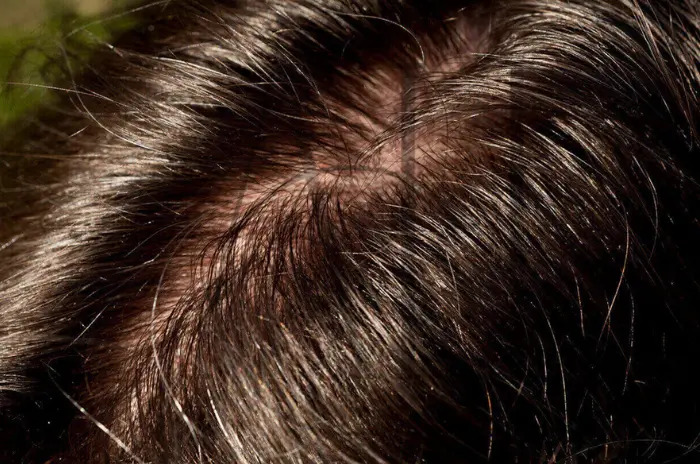
How Often Should You Wash Greasy Hair?
Determining the right washing frequency depends on multiple factors including hair type, lifestyle, and individual oil production levels.
Daily Washing for Very Oily Scalps
Some people genuinely need daily washing to maintain clean, manageable hair:
Candidates for daily washing:
- Individuals with naturally very oily scalps
- Those with fine, straight hair that shows oil quickly
- People who exercise daily and sweat heavily
- Individuals working in dirty or oily environments
Daily washing best practices:
- Use gentle, sulfate-free shampoos to minimize irritation
- Focus shampoo on the scalp, not the lengths
- Use minimal conditioner and apply only to ends
- Consider alternating between different shampoo types
Spacing Washes to Avoid Over-Stimulating Oil Production
For many people, extending time between washes can help regulate oil production:
| Hair Type | Recommended Frequency | Transition Period |
|---|---|---|
| Very Oily, Fine | Daily to every other day | 1-2 weeks |
| Moderately Oily | Every 2-3 days | 2-4 weeks |
| Combination (oily roots, dry ends) | Every 2-3 days | 3-4 weeks |
| Dry to Normal | 2-3 times per week | 4-6 weeks |
Adjusting Routine Based on Weather and Activity
Your washing schedule should be flexible and responsive to changing conditions:
Summer adjustments:
- Increased humidity may require more frequent washing
- Swimming in chlorinated pools necessitates immediate rinsing
- Higher activity levels and sweating may demand daily washing
Winter considerations:
- Dry indoor air may allow for less frequent washing
- Hat-wearing may increase oil accumulation at the scalp
- Static electricity can make hair appear greasier than it is
Underlying Medical Conditions
Sometimes persistent greasiness is a symptom of underlying health issues that require professional attention.
Hormone Imbalance and Skin Conditions
Hormonal fluctuations can significantly impact oil production:
Common hormonal causes:
- Polycystic ovary syndrome (PCOS)
- Thyroid disorders (both hyper- and hypothyroidism)
- Insulin resistance and diabetes
- Puberty, pregnancy, and menopause transitions
Associated symptoms to watch for:
- Sudden changes in hair texture or oil production
- Scalp acne or persistent irritation
- Hair loss or thinning in conjunction with oiliness
- Changes in body hair growth patterns
Seborrheic Dermatitis Symptoms and Impact
This common scalp condition affects oil production and scalp health:
Seborrheic dermatitis characteristics:
- Red, scaly patches on the scalp
- Greasy or oily flakes (different from dry dandruff)
- Itching and irritation
- May affect other oily areas like eyebrows and nose
Treatment approaches:
- Medicated shampoos with ketoconazole or selenium sulfide
- Gentle, anti-inflammatory scalp treatments
- Avoiding harsh chemicals that worsen irritation
- Professional dermatological care for severe cases
Thyroid or Health Issues Linked to Greasy Hair
Various health conditions can manifest through changes in hair and scalp:
Potential underlying conditions:
- Hypothyroidism (may cause both oily scalp and hair loss)
- Hyperthyroidism (can increase oil production)
- Nutritional deficiencies affecting hormone production
- Autoimmune conditions affecting skin and scalp health
How to Treat Greasy Hair After Washing
Effective treatment requires a comprehensive approach addressing both immediate symptoms and underlying causes.
Washing Frequency: Daily for Fine Hair
Fine-haired individuals often benefit from daily or near-daily washing:
Fine hair washing protocol:
- Use a gentle, volumizing shampoo designed for daily use
- Apply shampoo primarily to the scalp and roots
- Rinse thoroughly with lukewarm water
- Use conditioner sparingly and only on the ends
Clarifying Shampoos and Green Tea Tonics
Periodic deep cleaning can reset your scalp and remove buildup:
Clarifying shampoo benefits:
- Removes product buildup and environmental residue
- Strips away excess oils for a fresh start
- Should be used 1-2 times per week maximum
- Follow with a moisturizing conditioner to prevent dryness
Green tea tonic recipe:
- Brew strong green tea and let cool completely
- Apply to scalp after shampooing
- Massage gently and leave for 2-3 minutes
- Rinse thoroughly with cool water
Choosing Anionic Surfactants Carefully
Understanding shampoo ingredients helps you make better choices:
Effective cleansing agents for oily hair:
- Sodium lauryl sulfate (strong but can be harsh)
- Sodium laureth sulfate (milder alternative)
- Cocamidopropyl betaine (gentle, derived from coconut)
- Tea tree oil (natural antiseptic properties)
Wash Tools, Avoid Harsh Brushing
Proper tool maintenance and gentle handling prevent oil transfer and scalp irritation:
Tool cleaning schedule:
- Wash brushes weekly with shampoo and warm water
- Replace old brushes that harbor bacteria
- Use wide-tooth combs on wet hair to prevent breakage
- Sanitize hair accessories regularly
Best Prevention Tips for Greasy Hair
Prevention is often more effective than treatment when it comes to managing oily hair.
Clean Hair Tools, Towels, and Hats
Maintaining clean accessories prevents recontamination of freshly washed hair:
Weekly cleaning routine:
- Soak brushes in warm, soapy water
- Wash pillowcases and hair towels in hot water
- Clean hats and headbands regularly
- Replace old, worn tools that can’t be properly cleaned
Use Lightweight Conditioner at Ends Only
Proper conditioner application prevents weighing down oily hair:
Application technique:
- Start conditioner application at mid-length of hair
- Focus on the ends, which are typically drier
- Avoid applying conditioner to the scalp or roots
- Use a wide-tooth comb to distribute evenly
Eat Low-Glycemic Diet and Monitor Dairy Intake
Dietary modifications can support healthier oil production:
Beneficial foods for scalp health:
- Leafy greens rich in vitamins A and C
- Fatty fish providing omega-3 fatty acids
- Nuts and seeds for healthy fats and zinc
- Whole grains for steady blood sugar levels
Foods to limit:
- Processed snacks and sugary treats
- White bread and refined carbohydrates
- Excessive dairy, particularly skim milk
- Fried and heavily processed foods
Hormones and Internal Factors
Understanding the internal factors that influence oil production helps you address root causes rather than just symptoms.
Hormonal Changes: Puberty to Menopause
Different life stages bring unique hormonal challenges:
Puberty:
- Androgens increase, leading to higher oil production
- Acne and oily hair often appear together
- Proper hygiene education becomes crucial
- Gentle products prevent over-drying sensitive skin
Reproductive years:
- Monthly hormone fluctuations affect oil levels
- Pregnancy can dramatically change hair texture and oiliness
- Birth control may help regulate oil production
- Stress management becomes increasingly important
Menopause:
- Declining estrogen can actually increase relative androgen effects
- Some women experience increased oiliness during this transition
- Hormone replacement therapy may affect hair and scalp
- Nutritional support becomes more critical
Stress and Sebum Regulation
The stress-oil production connection is well-documented:
Stress response mechanisms:
- Cortisol elevation triggers androgen production
- Stress-induced touching and hair manipulation spreads oils
- Poor sleep quality affects hormone regulation
- Emotional stress can worsen existing scalp conditions
Stress reduction strategies:
- Regular physical exercise to regulate hormones
- Mindfulness and meditation practices
- Adequate sleep hygiene
- Professional counseling for chronic stress
Linking Oily Scalp to Health Conditions
Sometimes greasy hair is the first sign of underlying health issues:
Warning signs requiring medical attention:
- Sudden onset of severe oiliness
- Accompanying hair loss or thinning
- Scalp pain, sores, or persistent irritation
- Changes in body hair growth patterns
Is Your Shampoo Making Hair Greasy?
Your choice of hair care products can significantly impact oil levels and hair appearance.
Sulfate-Free and Gentle Formulas Work Better
While sulfates effectively remove oil, they can sometimes be too harsh:
Benefits of sulfate-free shampoos:
- Less likely to strip natural oils completely
- Reduce scalp irritation and inflammation
- May help regulate oil production over time
- Better for color-treated or chemically processed hair
When to consider sulfates:
- Very oily hair that doesn’t respond to gentler formulas
- Heavy product buildup requiring deep cleansing
- Initial clarifying treatment before switching to gentler products
Rinse Thoroughly to Prevent Residues
Proper rinsing technique is crucial for preventing buildup:
Effective rinsing method:
- Rinse with lukewarm water for at least 30 seconds
- Ensure all shampoo is removed before applying conditioner
- Rinse conditioner thoroughly, especially from the scalp area
- Finish with a cool water rinse to close hair cuticles
- Gently squeeze out excess water before towel drying
Clarifying Shampoos Remove Excess Oils
Strategic use of clarifying products can reset your scalp:
Clarifying schedule:
- Use once weekly for very oily hair
- Use bi-weekly for moderately oily hair
- Always follow with a moisturizing conditioner
- Avoid clarifying damaged or chemically treated hair too frequently
Scalp and Health Reasons Behind Greasy Strands
Understanding the connection between overall health and hair condition helps address root causes.
Hormonal Changes and Stress Spikes Sebum
The endocrine system directly influences oil production:
Key hormones affecting oil production:
- Androgens (testosterone, DHT) increase sebum production
- Insulin affects androgen levels and oil production
- Cortisol from stress can worsen hormonal imbalances
- Growth hormone fluctuations during development
Skin Conditions Like Seborrheic Dermatitis
Scalp conditions require specific treatment approaches:
Seborrheic dermatitis management:
- Use antifungal shampoos as directed by healthcare providers
- Avoid harsh scrubbing that worsens inflammation
- Maintain consistent, gentle care routine
- Consider prescription treatments for severe cases
Diet Factors: Fats, Sugar, Dehydration
Nutritional factors play a significant role in scalp health:
Dietary recommendations:
- Maintain stable blood sugar through balanced meals
- Include anti-inflammatory foods like berries and leafy greens
- Stay adequately hydrated (8-10 glasses of water daily)
- Limit inflammatory foods like excessive sugar and processed foods

Water Temperature and Washing Technique
The mechanics of hair washing significantly impact cleansing effectiveness and oil control.
Warm Water Softens Oil But Needs Shampoo to Remove It
Understanding the cleansing process helps optimize your technique:
Water temperature effects:
- Hot water can over-stimulate oil glands
- Cold water may not effectively dissolve oils
- Lukewarm water provides optimal cleansing conditions
- Cool final rinse helps close hair cuticles
Shampoo Emulsifies Sebum for Proper Rinsing
The science behind effective cleansing:
Proper shampooing technique:
- Wet hair thoroughly with lukewarm water
- Apply shampoo to palms and emulsify before applying
- Massage scalp gently with fingertips, not nails
- Allow shampoo to work for 1-2 minutes
- Rinse thoroughly until water runs clear
Pat-Dry and Gentle Handling After Washing
Post-wash care affects oil distribution and hair health:
Gentle drying method:
- Gently squeeze out excess water with hands
- Pat hair with a clean, absorbent towel
- Avoid vigorous rubbing that can damage cuticles
- Use a microfiber towel for less friction
Simple Ways to Prevent Greasy Hair
Prevention strategies are often more effective than reactive treatments.
Choose Mild, Sulfate-Free Shampoo
Product selection is fundamental to managing oily hair:
Ideal shampoo characteristics:
- pH-balanced formulas (around 4.5-5.5)
- Natural cleansing agents like coconut-derived surfactants
- Minimal heavy conditioning agents
- Anti-bacterial ingredients like tea tree oil
Try Clarifying Scalp Treatments
Regular deep-cleansing treatments prevent buildup:
DIY clarifying treatments:
- Apple cider vinegar rinse (1 part vinegar to 3 parts water)
- Baking soda paste for stubborn buildup (use sparingly)
- Clay masks specifically designed for scalp use
- Professional salon clarifying treatments
Adjust Wash Frequency to Hair Type
Finding your optimal routine requires experimentation:
Adjustment process:
- Start with your current routine and track results
- Gradually increase or decrease washing frequency
- Allow 2-4 weeks for your scalp to adjust
- Monitor changes in oil production and hair health
- Fine-tune based on seasonal and lifestyle changes
Top Tips to Control Greasy Hair
Practical daily strategies can significantly improve hair appearance and manageability.
Keep Hair Tools and Accessories Clean
Maintenance prevents recontamination:
Weekly cleaning routine:
- Soak brushes in warm water with shampoo
- Wipe down hair dryers and styling tools
- Wash hair ties and headbands regularly
- Replace old brushes that can’t be thoroughly cleaned
Use Dry Shampoo Between Washes
Strategic dry shampoo use extends time between washes:
Effective dry shampoo technique:
- Apply to clean hair for better absorption
- Focus on roots and oily areas
- Allow to sit for 2-3 minutes before brushing
- Use sparingly to avoid buildup
Choose Lightweight, Oil-Balancing Conditioners
Product selection makes a significant difference:
Conditioner characteristics to look for:
- Water-based rather than oil-based formulas
- Proteins to strengthen without weighing down
- Natural ingredients like aloe vera or chamomile
- Avoid heavy butters and oils
When to See a Doctor About Greasy Hair
Recognizing when professional help is needed ensures proper treatment of underlying conditions.
Persistent Oiliness Despite Care
Some situations require medical evaluation:
Red flags:
- No improvement after 6-8 weeks of proper care
- Sudden onset of severe oiliness
- Oiliness accompanied by other symptoms
- Family history of hormonal disorders
Signs of Hormonal Imbalance or Dermatitis
Certain symptoms indicate underlying conditions:
Hormonal imbalance indicators:
- Irregular menstrual cycles
- Unexpected hair loss or thinning
- Changes in body hair growth
- Persistent acne in adulthood
Dermatitis symptoms:
- Red, inflamed scalp areas
- Persistent itching or burning
- Unusual flaking or scaling
- Sores or lesions on the scalp
Professional Advice and Prescription Options
Healthcare providers can offer specialized treatments:
Available treatments:
- Prescription-strength medicated shampoos
- Hormonal therapies for underlying imbalances
- Topical treatments for scalp conditions
- Nutritional counseling for dietary factors
Scalp Problems Like Redness, Flakes, or Itching Appear
Accompanying symptoms often indicate treatable conditions:
When to seek immediate care:
- Severe scalp pain or tenderness
- Signs of infection (pus, extreme redness, fever)
- Sudden hair loss in patches
- Persistent bleeding or open sores
Early intervention by dermatologists or healthcare providers can prevent complications and provide effective treatment options tailored to your specific condition. These professionals can also help distinguish between temporary scalp issues and chronic conditions that require ongoing management.
Professional treatment options may include:
- Prescription-strength medicated shampoos with specific active ingredients
- Topical treatments for underlying scalp conditions
- Hormonal evaluations and treatments when appropriate
- Advanced diagnostic tests to identify underlying causes
- Customized treatment plans based on individual scalp analysis
- Follow-up care to monitor progress and adjust treatments
Remember that professional intervention is not a sign of failure in your hair care routine, but rather a proactive step toward optimal scalp health. Many scalp conditions are highly treatable when properly diagnosed and managed by qualified healthcare providers.
FAQ
Why does my hair still feel greasy or oily right after I wash it?
This usually indicates product buildup, wrong shampoo type, insufficient rinsing, or conditioner applied too close to the scalp. Use a clarifying shampoo weekly, rinse for 30 seconds with lukewarm water, and apply conditioner only from mid-length to ends.
Can washing my hair too often or too little contribute to greasiness?
Yes, both extremes cause problems. Overwashing strips oils and triggers overproduction, while underwashing allows buildup. Fine, straight hair may need daily washing, while thicker hair typically needs washing every 2-3 days.
What role do lifestyle and environmental factors play in greasy hair?
Air pollution, high-glycemic foods, dairy, and stress can increase oil production. Dirty hair tools, unwashed pillowcases, and hats also transfer oil back to clean hair.
Are there specific hair types more prone to becoming greasy after washing?
Fine, straight hair shows grease fastest because oil travels easily down smooth strands. Thick, curly hair stays cleaner longer as curves slow oil travel and greater volume absorbs more oil.
Could my shampoo or conditioner be making my hair greasy?
Yes. Heavy moisturizing shampoos can leave residue on oily hair. Sulfate-free formulas may not cleanse oily scalps effectively. Applying conditioner to scalp or insufficient rinsing also causes greasiness.
What medical conditions might cause persistent greasy hair?
Hormonal imbalances (PCOS, thyroid disorders), insulin resistance, seborrheic dermatitis, stress-related cortisol elevation, and certain medications can affect oil production. Consult a healthcare provider if proper care doesn’t improve greasiness after 6-8 weeks.
What are the best ways to treat and prevent greasy hair after washing?
Adjust washing frequency, use lukewarm water, focus shampoo on scalp, rinse thoroughly, choose appropriate products, use weekly clarifying shampoos, keep tools clean, reduce high-glycemic foods, and manage stress.
When should I consider seeing a doctor or dermatologist about my greasy hair?
Seek help if greasiness persists despite proper care for 6-8 weeks, appears suddenly, or is accompanied by hair loss, scalp pain, itching, infection signs, or suspected hormonal imbalances.

